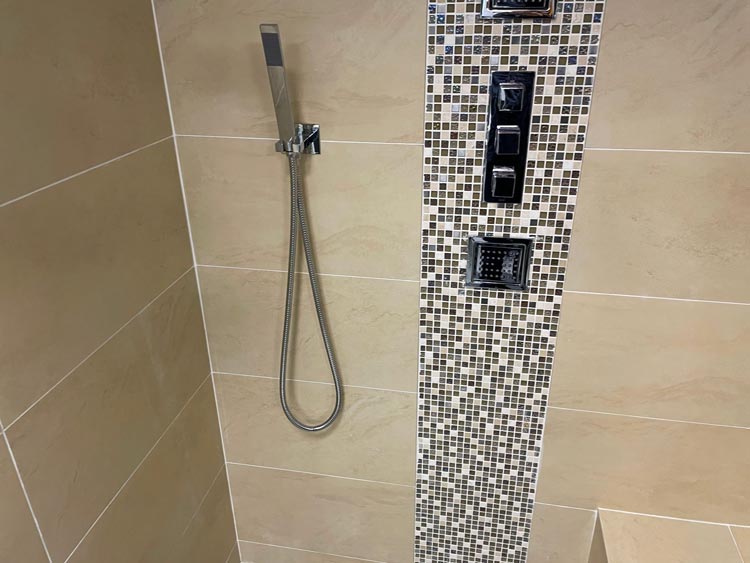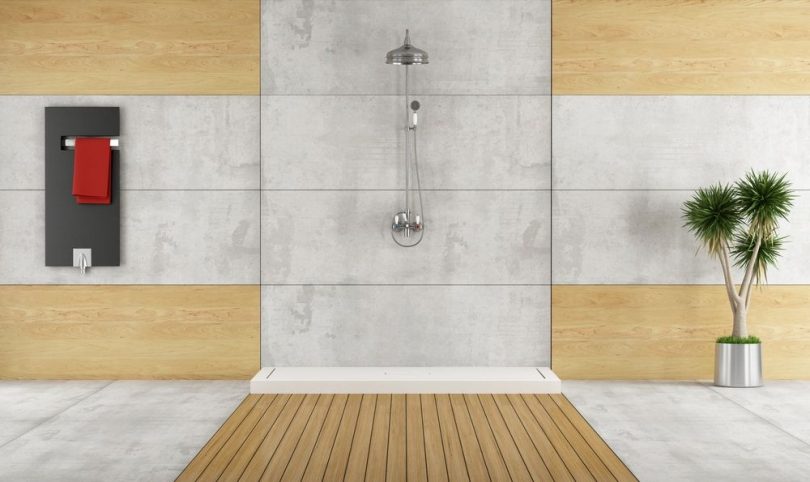Without a doubt, shower wall panels are very easy to install. But removing them is another story. If the glue is very adhered to the surface, it will take a long time to remove those panels without breaking them. If you don’t want to take risks, you better leave the job in expert hands.
Unfortunately, not many people have enough money to pay contractors. If that’s your case, you better learn how to remove shower wall panels without making a mess. Today, we’ll show you how to do it and all the tools and materials you’ll need during the process.
How to Remove Shower Wall Panels: Do It Yourself

1. Tools and materials
- Dry cloth
- Plastic sheeting
- Brush
- Adhesive remove
- Utility knife
- Crow bar
- Rubber hammer
- Chisel
- Face mask
- Respirator
- Scraper
- Work gloves
- Protective glasses
2. Protect the shower floor
First of all, cover the shower floor with plastic sheeting to catch all the dust and debris. Put on a face mask, protective glasses and work gloves at this point.
3. Remove the corner trims
Remove the corner trims using a chisel and a rubber hammer. To do this, lift the edge of the rim with the tip of the chisel. Then tap the chisel with the rubber hammer until the trim detaches from the wall. Then, grab the trim and pull it. If it doesn’t come out after doing this, keep trying the chisel.
4. Loosen the panels
After removing all the trims, it’s time to work on the panels. First of all, introduce the tip of the chisel under the edge of a panel. Then, tap the chisel with the hammer until the edge of the panel comes off the wall.
5. Remove the panels
After the edge of the panel comes off the wall, insert the tip of a crow bar under the panel. Then, pull and push the free end of the crow bar to remove the panel. Use your hands to apply more tension to the panel for easier removal.
If the panel doesn’t come out, use the chisel to tear the adhesive off the wall.
6. Remove the adhesive on the wall
After all the panels have been removed, it’s time to remove the adhesive residue stuck to the wall. To do this, open doors and windows for good ventilation. Also, put on a respirator. Adhesive removers have a strong odor, which can cause dizziness and nausea.
Brush the adhesive remover on the wall. Then, wait the recommended time for the product to take effect. Then, remove soft paint residue with a scraper. If there’s still residue on the wall, apply more remover and wait.
You can also use a piece of 40-grit sandpaper to remove the stubborn residues. Try not to apply too much pressure so as not to wear down the wall surface too much. Once the residues are completely removed, wipe the walls with a damp cloth.
7. Clean the shower floor
Remove the plastic sheeting from the floor. Fold the edges toward the center of the plastic sheeting to prevent debris from falling onto the floor. Then, pour all the waste into a dumpster. Wear a face mask so you don’t inhale the tiny dust particles spread in the air.
After that, sweep the shower floor to remove any remaining debris. Make sure no residue gets inside the shower drain.
Useful Tips
- Be careful when using the crowbar. If you apply too much force, you could break the panels. In the worst-case scenario, it can damage the shower valve if hit in the wrong place.
- Don’t point the tip of the chisel directly on the wall. You could accidentally break a piece of wall while tapping with the hammer. If that happens, you’ll have to spend more money to repair the wall.
- Use green alternatives to conventional adhesive removers. There are many low-odor products on the market, formulated with natural ingredients such as citric acid and soy extract.
- Don’t expose adhesive remover bottles to heat. This product is highly flammable. Better keep it in a cool, dry place protected from sunlight.
- Some people manifest severe allergic reactions when exposed to adhesive removers and other harsh chemicals. If you notice any unusual reaction such as redness, itching, and difficulty breathing, stop using the product immediately.
Conclusion
As you can see, there’s an easy and quick way to remove old shower wall panels. You just need to be careful to not break them. Also, don’t forget to use the required protective equipment to prevent accidents or possible intoxication.
If you don’t have the experience required for this kind of job and don’t want to make a disaster, it’s better to call a professional. Fortunately, uninstallation costs are usually affordable.
On the other hand, now that you know how to remove shower wall panels yourself, you can try to do it yourself. However, if you decide to do so, make sure to carefully follow the tips we’ve provided. Ask someone else for help if your own expertise don’t seem enough.








Leave a Comment